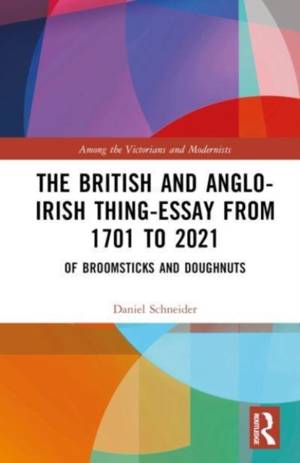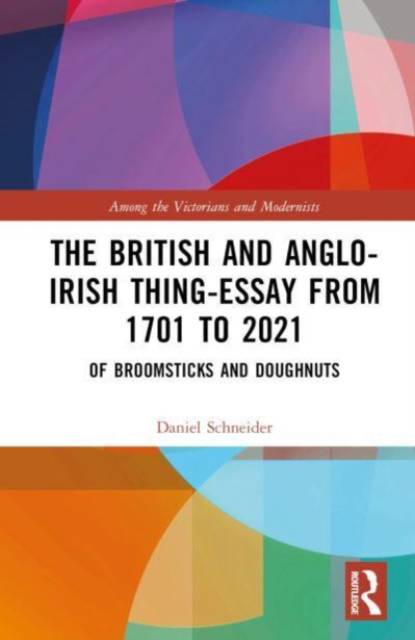
Je cadeautjes zeker op tijd in huis hebben voor de feestdagen? Kom langs in onze winkels en vind het perfecte geschenk!
- Afhalen na 1 uur in een winkel met voorraad
- Gratis thuislevering in België vanaf € 30
- Ruim aanbod met 7 miljoen producten
Je cadeautjes zeker op tijd in huis hebben voor de feestdagen? Kom langs in onze winkels en vind het perfecte geschenk!
- Afhalen na 1 uur in een winkel met voorraad
- Gratis thuislevering in België vanaf € 30
- Ruim aanbod met 7 miljoen producten
Zoeken
The British and Anglo-Irish Thing-Essay from 1701 to 2021
Of Broomsticks and Doughnuts
Daniel Schneider
€ 290,45
+ 580 punten
Omschrijving
While the it-narrative, the thing-poem and thing theatre have been around for some time, the essay - which is often considered literature's fourth genre - is still lacking its thing-subgenre. Yet, particularly British and Anglo-Irish literature display a long, albeit so far implicit tradition of texts that can be categorised as 'thing-essays' Starting with Jonathan Swift's "Meditation upon a Broomstick" (1701) and continuing until today, these texts draw broader insights from the contemplation of a material item of daily life. This book provides the first theoretical conceptualisation of this genre. Bringing elements from essay studies and the New Materialisms together, it shows why the essay lends itself particularly well to literarisations of the personal relationships that people foster to everyday objects. While the idiosyncrasies of each essay show the versatility of thing-essays, the study also seeks to unearth changing attitudes towards things - and thus towards people's material surroundings in general - throughout time. In order to account for such synchronic and diachronic differences in thing-essays, this study develops a typology of three modes via which things can be approached essayistically. In the book's second part, this framework will be employed in close readings and historicisations of 14 thing-essays from 1701 until 2021. Ranging from satire to sentimental writing, from religion to consumerism, from class to gender differences, from feelings of nationality to exoticism, from the French Revolution to Freud and from art to everyday life, the stylistic and thematic broadness of these thing-essays ultimately shows the multifarious connections between human life and materiality.
Specificaties
Betrokkenen
- Auteur(s):
- Uitgeverij:
Inhoud
- Aantal bladzijden:
- 254
- Taal:
- Engels
- Reeks:
Eigenschappen
- Productcode (EAN):
- 9781032374048
- Verschijningsdatum:
- 29/09/2023
- Uitvoering:
- Hardcover
- Formaat:
- Genaaid
- Afmetingen:
- 152 mm x 229 mm
- Gewicht:
- 526 g

Alleen bij Standaard Boekhandel
+ 580 punten op je klantenkaart van Standaard Boekhandel
Beoordelingen
We publiceren alleen reviews die voldoen aan de voorwaarden voor reviews. Bekijk onze voorwaarden voor reviews.









